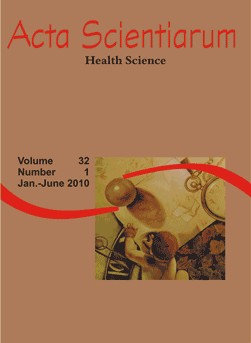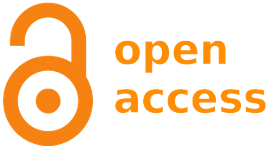<b>Aesthetic evaluation of patients submitted to orthodontic treatment</b> - DOI: 10.4025/actascihealthsci.v32i1.4517
Keywords:
esthetic dentistry, Angle Class II, multidisciplinary integration
Abstract
The aim of this study was to investigate the aesthetic results of orthodontic treatment in Class II individuals. Seven Caucasian females were randomly selected, subjected to corrective orthodontic treatment with extraction of at least two pre-molars and initiation of treatment between 16 and 26 years of age. All patients were interviewed; their speeches were recorded and then transcribed and analyzed. Plaster models, lateral radiographs and photographs contained in records were consulted to assess five quantitative parameters: facial contour, nasolabial angle, incisors golden ratio, facial and dental midline, and smile line to incisal edge. The corrective orthodontic treatment improves facial aesthetics, changing facial soft tissue measures, smile and personal relationships. It was concluded that the qualitative and quantitative research are complementary, because an analysis of results based only on one parameter can mask the actual outcome and reveal aspects partially. The qualitative analysis indicates that different facial angles and proportions of what is proposed as scientifically aesthetic does not interfere with the results of treatment, provided that the facial perception of the subjects involved meet the standards of normality and accepted by them and those set by society.Downloads
Download data is not yet available.
Published
2009-12-07
How to Cite
Delalíbera, H. V. C., Silva, M. C. da, Pascotto, R. C., Terada, H. H., & Terada, R. S. S. (2009). <b>Aesthetic evaluation of patients submitted to orthodontic treatment</b> - DOI: 10.4025/actascihealthsci.v32i1.4517. Acta Scientiarum. Health Sciences, 32(1), 93-100. https://doi.org/10.4025/actascihealthsci.v32i1.4517
Issue
Section
Dentistry Articles
DECLARATION OF ORIGINALITY AND COPYRIGHTS
I Declare that current article is original and has not been submitted for publication, in part or in whole, to any other national or international journal.
The copyrights belong exclusively to the authors. Published content is licensed under Creative Commons Attribution 4.0 (CC BY 4.0) guidelines, which allows sharing (copy and distribution of the material in any medium or format) and adaptation (remix, transform, and build upon the material) for any purpose, even commercially, under the terms of attribution.
Read this link for further information on how to use CC BY 4.0 properly.























5.png)







